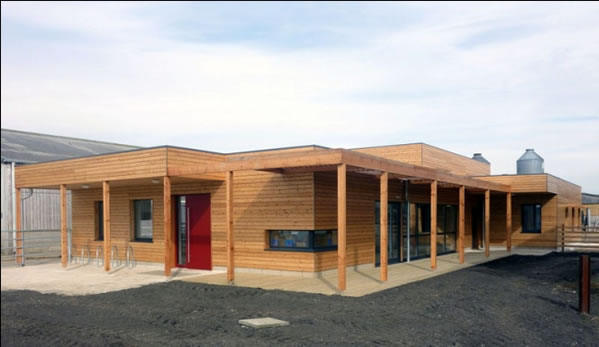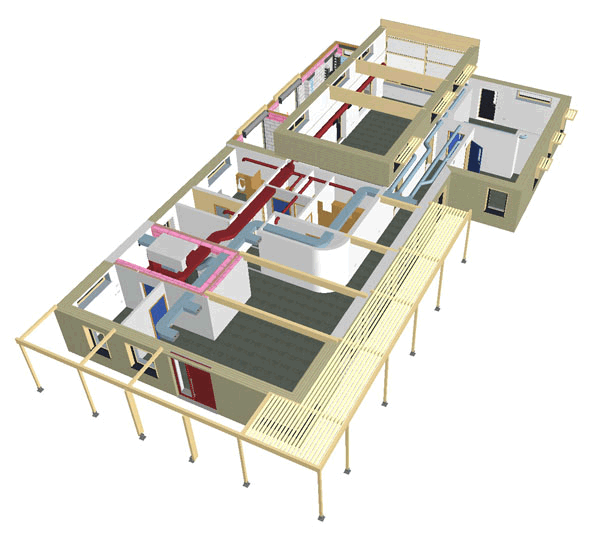BUDAPEST, October 28 – The Rural Regeneration Centre at Hadlow College in Kent is a showcase of low carbon and renewable technology. One of the top three agricultural colleges in the UK, the Rural Regeneration Centre will use just 10% of the typical energy consumption of a modern building and is the first such building in the UK to be constructed using prefabricated materials. The building was designed and built by James Anwyl, founding partner at Eurobuild, a company specializing in Passivhaus architecture and construction.
Constructed of super-insulated closed panels, the structure was planned using Building Information Modeling (BIM) by Archicad and assembled in just three days. In under ten days overall, the structure was airtight to a very high standard of 0.34 h. Pre-fabrication led to a high quality finish with significant time savings.

© James Anwyl
«I had a close relationship with the ventilation engineer throughout the design and build process as it is such a vital component of the Passivhaus discipline,” said James Anwyl. “We developed the overall strategy together and he calculated optimal flows, specified controls and designed ducting for minimum noise and best flow rates. He sent me a schematic as DWG which I absorbed and reformatted into my drawing set, then modeled it in Graphisoft’s MEP modeler. Effectively, as main contractor and architect, this was an essential part of the BIM design process,” he continued.
A monitoring system is tracking energy consumption of the building over the next two years and beyond to enable Eurobuild to learn about the building’s performance in relation to weather and usage patterns. The students and staff can see the results in the exhibition area and via the online Building User Guide.

The HVAC system modeled in Archicad
© James Anwyl
The building employs a number of sustainable technologies including a super efficient mechanical ventilation system, triple glazed windows, and a ground source heat pump for heating and cooling. The sanitary rooms all have waterless urinals, low flush toilets, timed water-saver taps and moderated flow showers. Low energy T5 lighting is used throughout the carefully planned building.
Founded by Dr. Wolfgang Feist, the Passivhaus Institute’s standard for energy efficiency results in ultra-low energy buildings that require little energy for space heating or cooling. Passivhaus dwellings typically achieve an energy saving of 90% compared to traditional housing. These principles can be applied not only to the residential sector but also to commercial, industrial, and public buildings.
Título Modal
Cuerpo Modal